Complete Solutions to Level-II (H.W) of chapter COLLISION of Class 11 book with complete answers and questions
| Class 11 | PHYSICS |
| Chapter | COLLISION |
| NARAYANA | Level-II (H.W) |
| Number Of Questions | 54 |
| Academic Year | 2023-24 |
A bicycle chain of length `1.6 m` and of mass `1 kg` is lying on a horizontal floor. If `g = 10 ms^(-2)`, the work done in lifting it with one end touching the floor and the other end `1.6 m` above the floor is
View SolutionA bucket of mass `'m'` tied to a light rope is lowered at a constant acceleration of `g//4`. IF the bucket is lowered by a distance `'d'` , the work done by the rope will be (neglect the mass of the rope)
View SolutionA weight of `5N` is moved up a frictionless inclined plane from `R` to `Q` as shown.
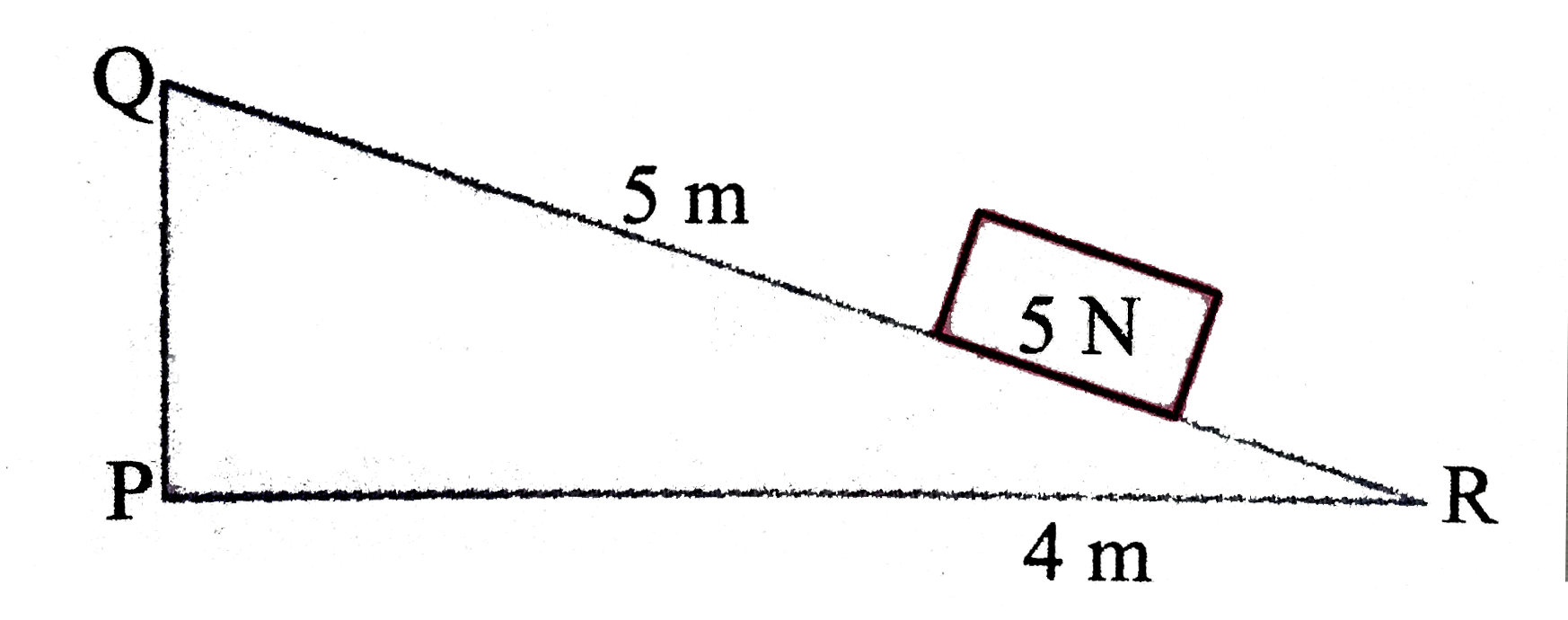
What is the work done in joules?
View SolutionA `5 kg` stone of relative density `3` is resting at the bed of a lake. It is raised through a height of `5m` in the lake. If `g = 10 m//s^(2)`, then work done is
View SolutionWater is drawn from a well in a `5kg` drum of capacity `55L` by two ropes connected to the top of the drum. The linear mass density of each rope is `0.5kgm^-1`. The work done in lifting water to the ground from the surface of water in the well `20m` below is
`[g=10ms^-2]`
View SolutionA ball is dropped from the top of a tower. The ratio of work done by force of gravity in `1^(st), 2^(nd)`, and `3^(rd)` second of the motion of ball is
View SolutionA plate of mass `m`, length b, and breadth a is initially lying on a horizontal floor with length parallel to the floor and breath perpendicular to the floor. Find the work done to erect it on its breadth.
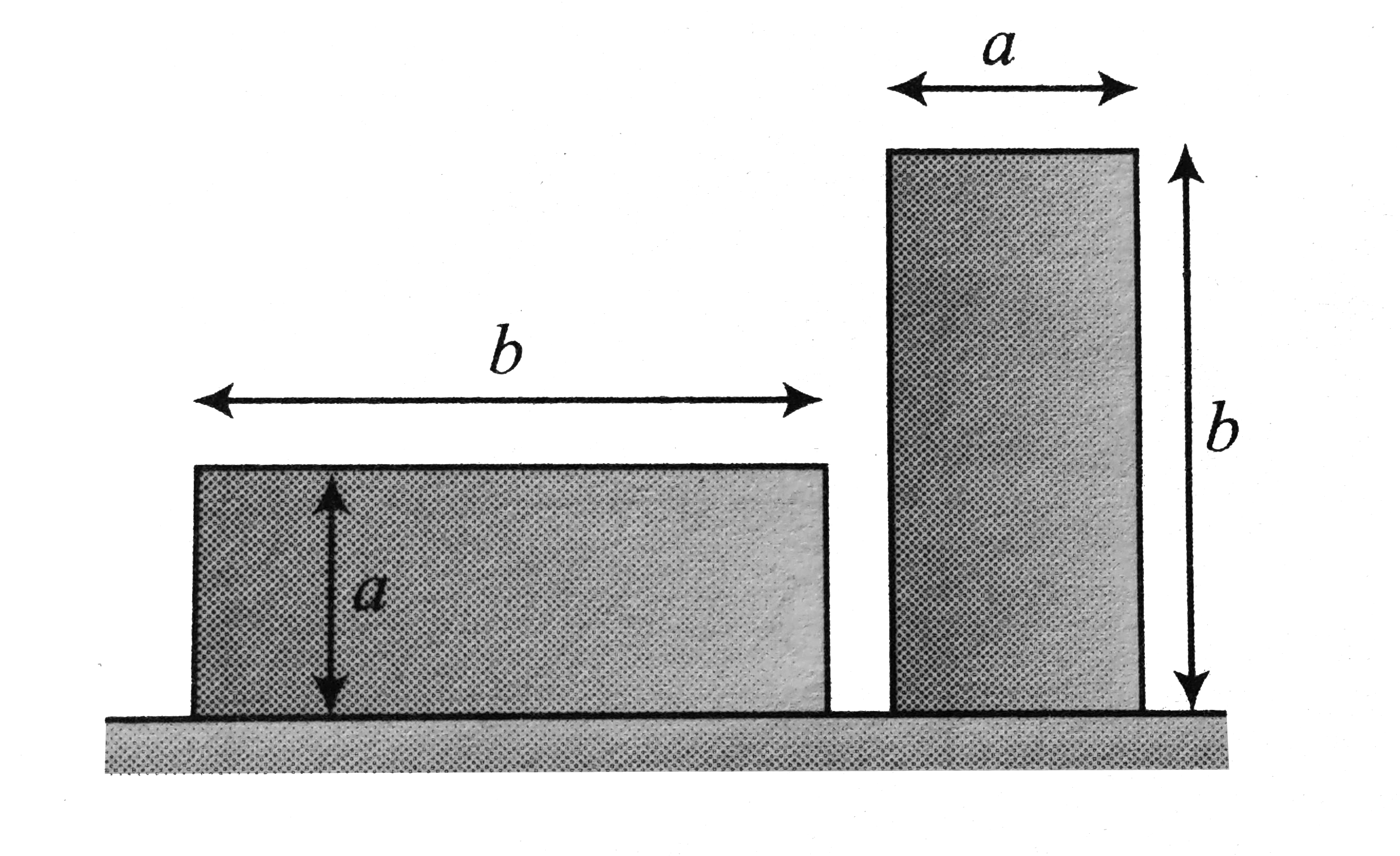
View SolutionA block of mass `10 kg` slides down a rough slope which is inclined at `45^(0)` to the horizontal. The coeffficient of sliding friction is `0.30`. When the block has to slide `5m`, the work done on the block by the force of friction is nearly
View SolutionA uniform rope of length `'L` and linear density `'mu'` is on a smooth horizontal table with a length `'I'` lying on the table. The wrok done in pulling the hanging part on to the table is
View SolutionA uniform rod of mass 2kg and length `l` is lying on a horizontal surface. If the work done in raising one end of the rod through an angle `45^(@)` is `'W'`, then the work done in raising it further `45^(@)` is
View SolutionA block is constrained to move along `x`axis under a force `F=-(2x)N`. Find the work done by the force when the block is displaced from `x=2 m` to `x = 4m`
View SolutionA force of `(4x^(2)+3x)N` acts on a particle which displaces it from `x=2m` to `x = 3m`. The work done by the force is
View SolutionA body of mass `6kg` is under a force which causes displacement in it given by `S= (t^(2))/(4)` maters where `t` is time . The work done by the force in `2` sec is
View SolutionTwo spheres of same material are moving with linetic energies in the ration `108:576`. If the ratio of their veloctities is `2:3`, then the ratio of their radii is
View SolutionIf the momentum of a body decreases by `30%`, then kinetic energy decreases by
View SolutionIf the mass of a moving body decreased by one third of its initial mass and velocity is tripled, then the percentage change in its kinetic energy is
View SolutionThe kinetic energy of a projectile at the highest point of its path is found to be `3//4^(th)` of its initial kinetic energy. If the body is projected from the ground, the angle of projection is
View SolutionThe kinetic energy of a moving body is given by `k = 2v^(2), k` being in joules and `v` in `m//s`. It's momentum when travelling with a velocity of `2m//s` will be (in `kg ms^(-1)`)
View SolutionA simple pendulum is swinging vertical plane. The ratio of its potential energy when it is making `45^(@)` and `90^(@)` with the vertical is
View SolutionA spring of force constant `800 Nm^(-1)` is stretched initially by `5 cm`. The work done in stretching from `5 cm` to `15 cm` is
View SolutionWhen a spring is compressed by a distance `'x'`, the potential energy stored is `U_(1)`. It is further compressed by a distance `'2x'`, the increase in potential energy is `U_(2)`. The ratio of `U_(1):U_(2)`
View SolutionA massless spring with a force constant `K = 40N//m` hangs vertically from the ceiling.A `0.2 kg` block is attached to the end of the spring and held in such a position that the spring has its natural length and suddenyl released. The maximum elastic strain energy stored in the spring is `(g=10 m//s^(2))`
View SolutionA bullet of mass `'m'` fired with a velocity `'v'` into a fixed log of wood and penetrates a distance `'s'` before coming to rest. Assuming that the path of the bullet in the log of wood I horizontal, the average resistance offered by the log of wood is
View SolutionA ball of mass m is thrown in air with speed `v_(1)` from a height `h_(1)` and it is at a height `h_(2)(gth_(1))` when its speed becomes `v_(2)` . Find the work done on the ball the air resistance.
View SolutionAn object of mass 5 kg falls from rest through a vertical distance of `20 m` and attains a velocity of 10 m/s. How much work is done by the resistance of the air on the objrct?
`(g=10m//s^(2))`.
View SolutionThe velocity of 2 kg body is changed from `(4hat(i)+3hat(j)) ms^(-1)` to `6 ms^(-1)`. The work done on the body is
View SolutionAn out fielder throws a cricket ball with an initial kinetic energy of `800 J` and an nfielder catches the ball when its kinetic energy is `600J`. If the path of the bal between them is assumed straight and is `20m` long, the air resistance acting on the ball is
View SolutionVelocity-time graph of a particle of mass (2 kg) moving in a straight line is as shown in Fig. 9.20. Find the word done by all the forces acting on the particle.
 .
.
View SolutionA block of mass `1kg` slides down a curved track which forms one quadrant of a circle of radius `1m` as shown in figure. The speed of block at the bottom of track is `v=2 ms^(-1)`. The work done by the of friction is
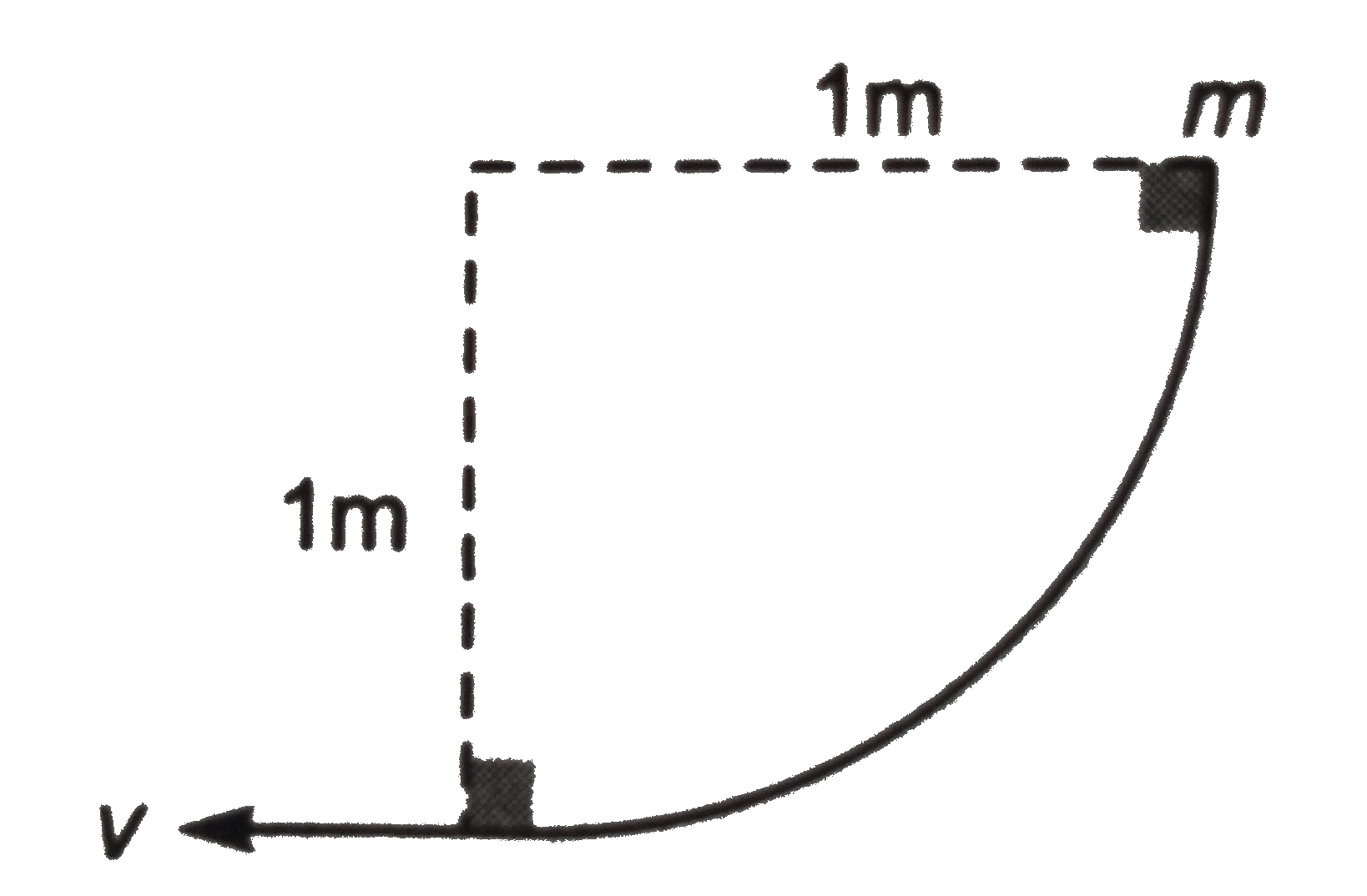 .
.
View SolutionA block of mass `4 kg` is initially at rest on a horizontal frictionless surface. A force `vec(F) = (2x+3x^(2))hat(i) N` acts horizontally on it. The maximum kinetic energy of the block between `x = 2m` and `x=4m` in joules is
View SolutionA force `F = Ay^(2)+By+C` acts on a body at rest in the `Y`-direction. The kinetic energy of the body during a displacement `y = -a` to `y = a` is
View SolutionA `3kg` model rocket is launched striaght up with sufficient initial speed to reach a maximum height of `100 m`, even though air resistance (a non-conservative force) performs-`900 J` of work on the rocket. The highest the rocket would have gone without air resistance will be
View SolutionA body of mass `2 kg` is thrown up vertically with kinetic energy of `490 J`. If `g = 9.8m//s^(2)`, the height at which the kinetic energy of the body becomes half of the original value, is
View SolutionA simple pendulum bob has a mass `''m''` and length `''L''`. The bob is drawn aside such that the string is horizontal and then it is released. The velocity of the bob while it crosses the equilibrium position is
View SolutionA `100 gm` light bulb dropped from a tower reaches a velocity of `20 m//s` after falling through `100 m`. The energy transferred to the air due to viscous force is
View SolutionIn the arrangement shown in figure, string is light and inextensible and friction is absent every where. The speed of bothblocks after the block `'A'` has ascend a height of `1m` will be `(g=10 m//s^(2))`
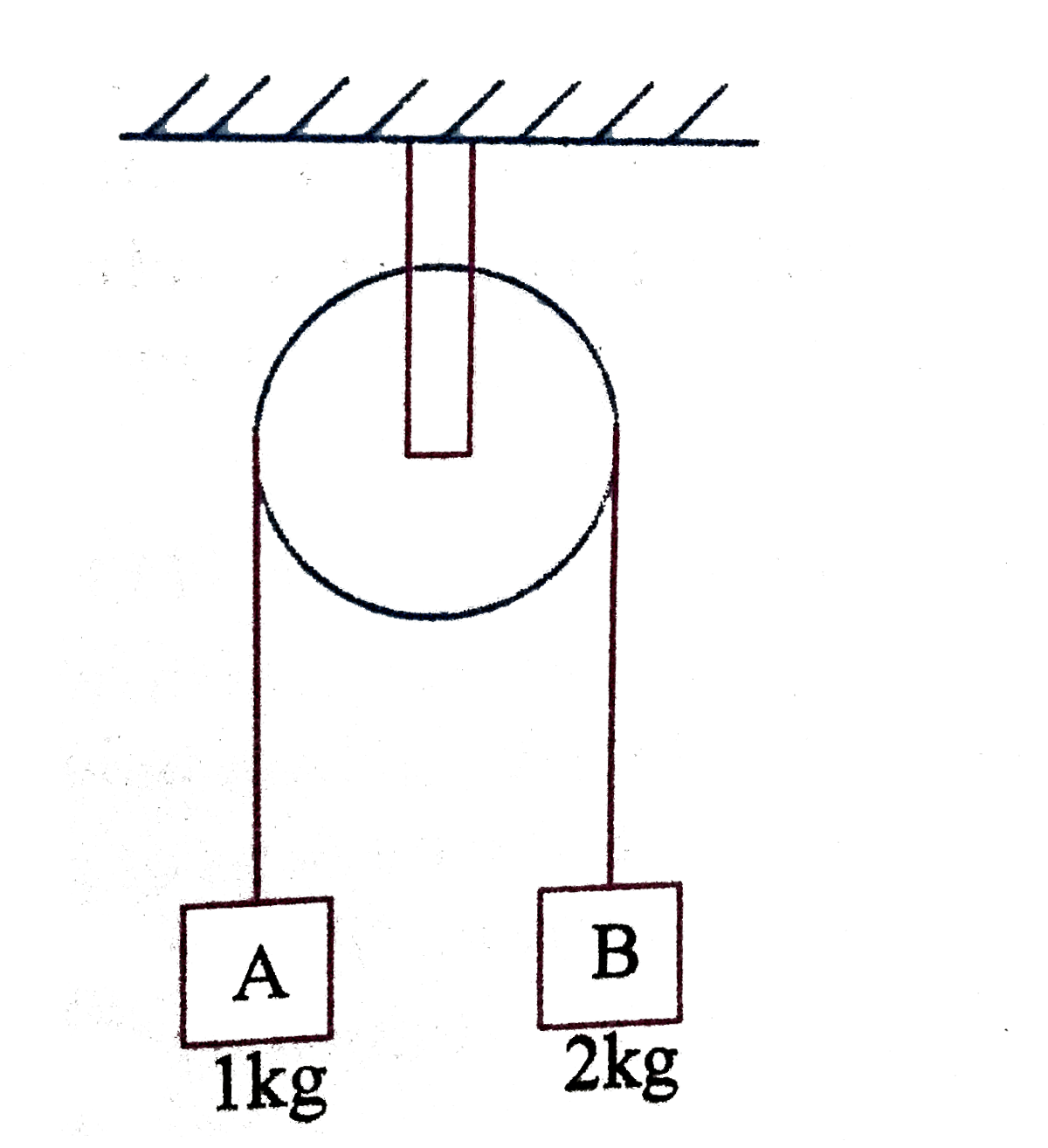
View SolutionA car drives along a straight level frictionless road by an engine delivering constant power. Then velocity is directly proportional to
View SolutionThe input power to an elctric motor is `200 KW`. Its efficiency is `80%`. It operates a crane of efficiency `90%`. If the crane is lifting a load of `3.6` tonnes, the velocity with which the load moves is
View SolutionThe human heart discharges `75 cm^(3)` of blood per beat against an average pressure of `10 cm` of `Hg`. Assuming that the pulse frequency is `75` per minute, the power of the heart is (density of `Hg = 13.6 gm cm^(-3)`)
View SolutionAn elevator can carry a maximum load of `1800 kg` (elevator + passengers) is moving up with a constant speed of `2 ms^(-1)`. The friction force opposite the motion is `4000 N`.What is minimum power delivered by the motor to the elevator?
View SolutionA body is initially at rest. It undergoes one-dimensional motion with constant acceleration. The power delivered to it at time t is proportional to (i) `t^(1//2)` (ii) t (iii) `t^(3//2)` (iv) `t^(2)`
View SolutionA dam is situated at a height of `550 m` above sea level and supples water to a power house which is at a height of `50 m` above sea level. `2000 kg` of water passes through the turbines per second. What would be the maximum electrical power output of the power house if the whole system were `80%` efficient
View SolutionA stone tied to a string of length `L` is whirled in a vertical circle with the other end of the string at the centre. At a certain instant of time the stone is at lowest position and has a speed `u` . Find the magnitude of the change in its velocity as it reaches a position, where the string is horizontal.
View SolutionA pilote of mass `m` can withstand a maximum apparent weight `6` times of `mg`. The minimum radius curvature of vertical circle in which the aeroplane dives up from lowest point with a speed `504 kmph` is
View SolutionA simple pendulum is oscillating with angular displacement `90^(@)` For what angle with vertical the acceleration of bob direction horizontal?
View SolutionA steel wire can withstand a load up to `2940N`. A load of `150 kg` is suspended from a rigid support. The maximum angle through which the wire can be displaced from the mean position, so that the wire dose not break when the load passs through the position of equilibrium, is
View SolutionA small block is freely sliding down from top of a smooth inclined plane. The block reaches bottom of inclined plane then the block describes a vertical circle of radius `0.5 m` along smooth track. The minimum vertical height of inclined plane should be
View SolutionA stone of mass `6 kg` is revolved in a vertical circle of diameter `6m`., such that its speed is minimum at a point. If the `K.E` at the same point is `250 J`, then minimum `PE` at that point is
View SolutionThe breaking strength of a string is `55 kg wt`. The maximum permissible speed of a stone of mass `5 kg` which is revolved in a vertical circle of radius `4m` with the help of this string is `(g = 10 m//s^(2))`
View SolutionA `16 gm` mass is moving in the `+x` direction at `30 cm//s` while a `4 gm` is moving in the `-x` direction at `50 cm//s`. They collide head - on and stick together. Their common velocity after impact is
View SolutionA bullet of mass `50` grams going at a speed of `200 ms^(-1)` strikes a wood block of mass `950 gm` and gets embedded in it. The velocity of the block after the impact is
View SolutionA block of mass `1 kg` moving with a speed of `4 ms^(-1)`, collides with another block of mass `2 kg` which is at rest. If the lighter block comes to rest after collision, then the speed of the heavier body is
View SolutionA neutron travelling with a velocity `v` and kinetic energy `E` collides perfectly elastically head on with the nucleus of an atom of mass number `A` at rest. The fraction of the total kinetic energy retained by the neutron is
View SolutionTwo balls each of mass `'m'` are moving with same velocity `v` on a smooth surface as shown in figure. If all collisions between the balls and balls with the wall are perfectly elastic, the possible number of collisions between the balls and wall together is
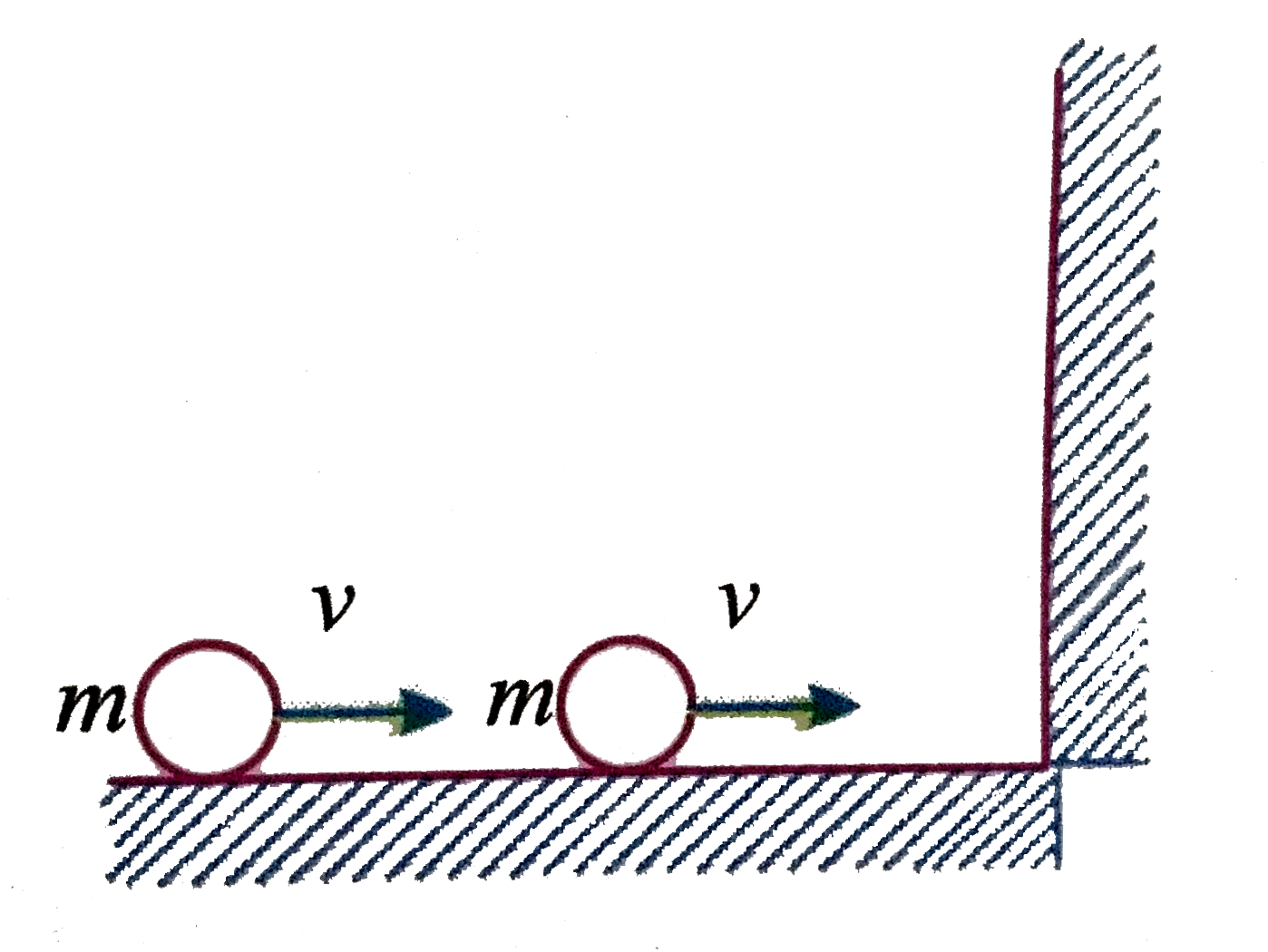
View Solution
Level-II (H.W) questions and complete solutions for chapter COLLISION of NARAYANA PHYSICS (HINGLISH) of Class 11